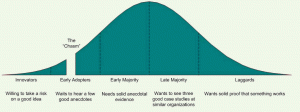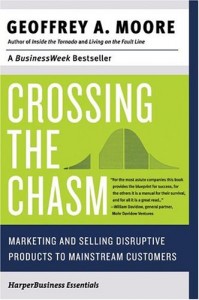 Advertising is dying, but this time from the inside. We’ve seen many of the recent articles in FastCompany (The Future of Advertising, 17 November 2010) and Business Week (Don Draper’s Revenge, 24 November 2010) talking about the future of the industry and although many would argue that the same story has been rolled out annually for the past 10 years, it seems like this time it is starting to come true.
Advertising is dying, but this time from the inside. We’ve seen many of the recent articles in FastCompany (The Future of Advertising, 17 November 2010) and Business Week (Don Draper’s Revenge, 24 November 2010) talking about the future of the industry and although many would argue that the same story has been rolled out annually for the past 10 years, it seems like this time it is starting to come true.
From the outside we have already heard about how advertising and consumers are falling out, not wanting to hear the same old story, not understanding their real needs and not really wanting to listen.
From the inside the challenge has really become getting the right people in the right places and this is where the industry is really suffering (I’ve mentioned this before in my post ‘Why advertising needs entrepreneurs‘) – it’s suffering because as technology slowly eats away at the core business the gap between those who understand and embrace it and those who do not is growing larger and larger. A chasm is developing in advertising, a chasm between the people themselves, and it is this that is slowly killing us, from the inside.
 On the one side of the chasm we have the traditionalists, those who think they are evolving, who have read a little, trained a little and are now adding new media and ‘digital’ to their existing repertoire – but they are failing. They are failing for two major reasons that are simply a factor of the human condition: i) They don’t know what they don’t know – this farcical phrase in fact sums it up, since they are trying to learn a completely new discipline it is very difficult for them to know when they have mastered it, and in true catchphrase style, a little knowledge is a dangerous thing, and as they learn a snippet more information about how Twitter works, or what augmented reality really is they think they have mastered it; and ii) it is very hard to teach someone to walk, learning to understand the changes that the internet and digital landscape have delivered do not come out of a book (at least not a single book) and are therefore very hard to learn from an active point-of-view, they must be experienced to be really understood.
On the one side of the chasm we have the traditionalists, those who think they are evolving, who have read a little, trained a little and are now adding new media and ‘digital’ to their existing repertoire – but they are failing. They are failing for two major reasons that are simply a factor of the human condition: i) They don’t know what they don’t know – this farcical phrase in fact sums it up, since they are trying to learn a completely new discipline it is very difficult for them to know when they have mastered it, and in true catchphrase style, a little knowledge is a dangerous thing, and as they learn a snippet more information about how Twitter works, or what augmented reality really is they think they have mastered it; and ii) it is very hard to teach someone to walk, learning to understand the changes that the internet and digital landscape have delivered do not come out of a book (at least not a single book) and are therefore very hard to learn from an active point-of-view, they must be experienced to be really understood.
On the other side of the chasm we have those who have what is now called ‘digital DNA‘, those who have experienced the online revolution and the shift in balance of power to the consumer – those who understand that the new model puts anyone and everyone in charge and that the lack of scarcity in new media changes both the content we transmit and the business model we can use to sell it. These people, the digital natives, can understand how the world is changing because they have lived it – in a darkened room huddled over a laptop, in their schools and universities or even in digital agencies. The fact is that this chasm is not solely limited to agencies – it covers all of us in the communications business.
Only a few have managed to make the leap and connect the dots of the industry and this is driven by those with specific experience that is being leveraged in the right situation, a combination of branding and technology that finally delivers on something very human, the way that we communicate with each other.

Almost 20 years after Geoffrey Moore’s book was first published (Crossing the Chasm: Marketing and Selling High-Tech Products to Mainstream Customers, Moore 1991) defining this chasm in the marketing of high tech products, it has finally become mainstream, and the chasm in the advertising and communications product is wider than ever. Moore talked about the difficulty of moving from visionaries (early adopters) to pragmatists (early majority) and this is the exact challenge that we are experiencing in the industry today, but now from a human resource angle. The visionaries of communication products are not inside the industry but sitting in Silicon Valley at Twitter, Facebook, YouTube and of course Google, and the pragmatists, those who understand both this new technology and the communications business, are so few and far between that their impact is negligible. This is the chasm that is widening, as fewer new recruits are hired to the ad business and more of those who know the trade and tempted away to tech startups there is a growing chasm not only between those agencies in the business but also at a larger scale between Madison Avenue and Silicon Valley.
So where will this take us? And how can we build the bridge to cross the chasm?
Bridging the chasm will take people and learning, but above all it will take time. For people it will be about getting the right skillset in the right places both at the top, and in the middle – it is not enough to simply place a visionary at the top of an organisation and hope that the ship will change course – for change to really be effective it is must embraced by the top and driven throughout the organisation – companies and agencies that have replaced their senior management with these digital natives are turning the corner and they are benefitting from being ahead of the pack (clear examples are CP&B, Modernista and R/GA). It will also take time and learning – time for the digital skillset to infuse more of the population and then learning as we start to become more scientific about how we approach the planning of this (but again don’t think that a digital planner is the answer).
And finally a few words of guidance from an ex-colleague of mine, John Keehler (@randomculture), from Click Here who put together an excellent presentation that he delivered at Boulder Digital Works earlier this year, for those of us that haven’t jumped the gap to Silicon Valley there are some wise words here.


1 comment